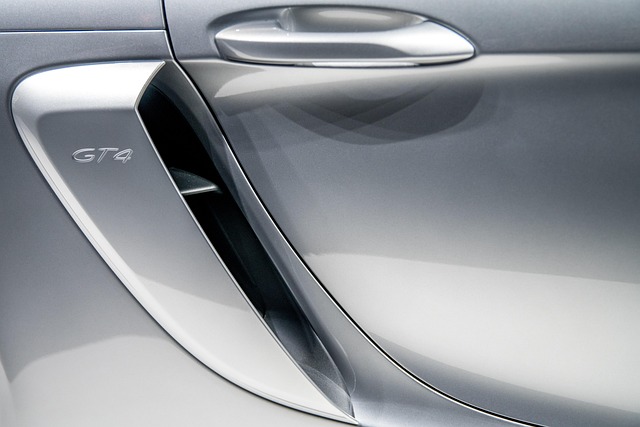Slow engine response times hinder performance and fuel efficiency. Upgrading to cold air intakes (CAIs) improves combustion by drawing in cooler, denser air, boosting power output and economy. Evaluating current intake systems identifies areas for improvement. High-performance CAIs, like filterless and lightweight models, enhance airflow for quicker response times and better driving experience. Selecting the right CAI ensures seamless integration and reliable performance.
Looking to supercharge your vehicle’s performance? Boosting engine response time can transform your driving experience. This article guides you through a strategic approach, starting with understanding the critical impact of response time on engine performance. We’ll explore how the air intake system plays a pivotal role and delve into evaluating its current state.
The focus then shifts to the key benefit of selecting cold air intakes for optimized flow and power. Learn how to tailor your engine for enhanced responsiveness and enjoy the rush of improved performance.
- Understand Engine Response Time Impact
- Evaluate Current Air Intake System
- Research and Select Cold Air Intakes
- Optimize Engine for Improved Performance
Understand Engine Response Time Impact

Engine response time, or how quickly your vehicle’s engine accelerates from a standstill, is a critical factor in overall performance and driver satisfaction. Understanding its impact involves recognizing that a slow response can lead to lag, reduced power delivery, and decreased fuel efficiency. This is particularly evident during daily driving, where rapid acceleration is often required at traffic lights or while merging onto highways.
One effective way to enhance engine response time is by selecting and installing cold air intakes (CAIs). CAIs are popular modifications that route cooler, denser air directly into the engine’s intake system. By doing so, they support a more efficient combustion process, allowing for faster and more responsive acceleration. In conjunction with other performance upgrades like cold air box modifications or proper installation techniques, CAIs can significantly improve an engine’s responsiveness while also potentially offering benefits in terms of both power output and fuel economy.
Evaluate Current Air Intake System

Evaluating your current air intake system is a crucial step in enhancing engine performance and reducing response time. Many modern vehicles come with factory-fitted air intakes that, while sufficient, may not be optimized for maximum efficiency. By assessing the flow of air into the engine, you can identify bottlenecks or areas for improvement. This process involves examining the size and design of the intake manifold, the condition of the air filter, and the overall routing of the airflow.
One effective strategy to consider is selecting a cold air intake (CAI), which is a popular choice among car enthusiasts looking for top-secret car intake upgrades. Direct fit cold air kits are designed to replace the factory intake, providing a larger, more efficient air source. By drawing in colder, denser air, these systems can significantly improve engine response time and overall performance. Regular maintenance of the CAI, including periodic cleaning and checking for leaks, ensures its longevity and continued effectiveness, making it an essential aspect of optimizing your vehicle’s power delivery.
Research and Select Cold Air Intakes

When looking to boost your engine’s response time, one key area to consider is the intake system. Researching and selecting a high-performance cold air intake (CAI) can significantly impact your engine’s performance and responsiveness. Opting for a filterless CAI option not only enhances airflow but also reduces restrictions, allowing for a smoother and faster flow of cool air into the engine. This direct path to the cylinder head ensures that your engine receives an abundance of rich, cold air, which is crucial for maximizing power and torque output.
Exploring lightweight cold air feeders is another strategic move. These components are designed to minimize weight and maximize efficiency, contributing to quicker response times. The best CAI for engine power isn’t just about improving airflow; it’s also about ensuring the system integrates seamlessly with your vehicle’s existing design and doesn’t compromise on reliability or longevity. By carefully researching and selecting a suitable cold air intake, you’re taking a vital step towards enhancing your engine’s performance and overall driving experience.
Optimize Engine for Improved Performance

One of the most direct ways to increase engine response time is through optimization. This involves enhancing the intake of air and fuel, which can be achieved by selecting a top-rated cold air intake system. By replacing the standard air filter with a high-flow, lightweight cold air feeder, you allow for more oxygen to enter the engine, resulting in improved combustion and faster response times.
This simple modification ensures that your engine receives the maximum amount of cool, dense air, which is crucial for optimal performance. High-performance intakes are designed to provide efficient airflow, ensuring each cylinder gets what it needs to produce more power and reduce lag. This can significantly improve acceleration and overall drivability, making your vehicle feel more responsive on the road.
By understanding the impact of engine response time, evaluating your current air intake system, researching and selecting cold air intakes, and optimizing your engine for improved performance, you can significantly enhance both the speed and efficiency of your vehicle. Among these steps, selecting a high-quality cold air intake (CAI) system stands out as a game-changer, offering direct benefits to engine response time and overall vehicle dynamics. Remember that small improvements add up, and each optimized component contributes to a smoother, more responsive driving experience.



